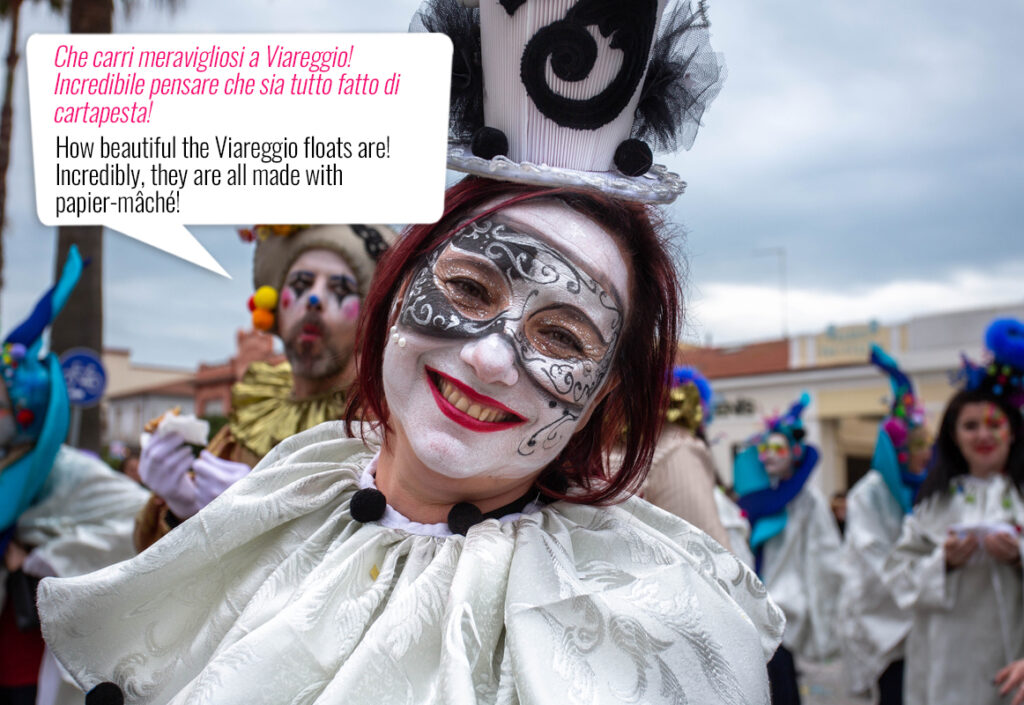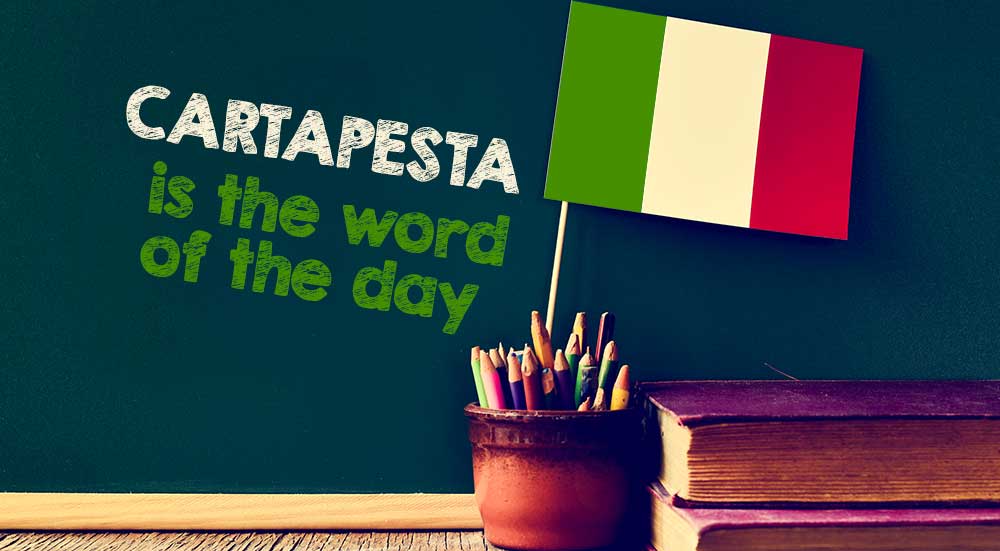Cartapesta (kar-tah peh-stah) means papier-mâché in English and, with coriandoli and maschera is the most quintessential of all Carnevale words.
It comes from the union of carta (paper) and pesta (pounded), which reveals what it is: a concoction of paper pulp bound with adhesive and shaped into forms limited only by the imagination of its creators.
The origins of papier-mâché stretch back to ancient China, where it first served practical purposes in the creation of helmets and shields. However, it was during the Renaissance that Italy embraced cartapesta and turned it into an art form, with Italian artisans using it to sculpt religious figures and decorative items for churches.

But nowhere is the spirit of cartapesta more alive than in the Italian Carnevale: it is here, in the shadowed alleys of Venice and the colorful streets of Viareggio, that cartapesta truly comes to life. Artisans can craft with it elaborate masks and towering floats, which embody the joy and satire of the festival, but also its transient beauty.
Beyond the festivities, cartapesta can still be found, just like all those centuries ago, in the Renaissance, in the quiet sanctity of churches and the lively nature of processions, where it morphs into lifelike religious statuary. Its ability to mimic the drapery of fabric and the softness of skin makes it an ideal medium for creating figures imbued with emotion and grace.
Cartapesta is also commonly used to create objects and decorations for the stage, where it certainly comes in handy to make props and decorations.
Che carri meravigliosi a Viareggio! Incredibile pensare che sia tutto fatto di cartapesta!
How beautiful the Viareggio floats are! Incredibly, they are all made with papier-mâché!
Tutti gli oggetti che vedi sul palco, inclusa quella colonna, sono fatti di cartapesta!
All the props on stage, even that column, are made with papier-mâché!































